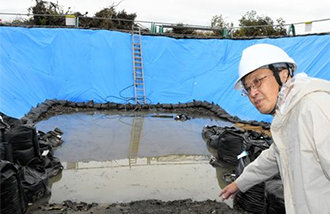Conversion of Peace Dam into Multipurpose One Being Planned
Conversion of Peace Dam into Multipurpose One Being Planned
Posted October. 03, 2002 22:36,
The government is working on a project to turn Peace Dam into a multipurpose one with water gates to be newly constructed thereon. Peace Dam was originally constructed to cope with the possible collapse of North Koreas Mt. Kumkang Dam.
On October 3, 2002, Ministry of Construction and Transportation and Korea Water Resources Corporation announced that they have been reviewing ways to utilize Peace Dam as a multipurpose dam, which could decrease the flood damages caused by the abnormal weather, and relieve the shortage of water running into the Northern Han River, which could be possibly caused when Nt. Kumkang Dam of North begins to hold water in it.
Among the measures discussed so far is the establishment of water gates. For now, the dam has 4 water-passages of 10m diameter trough its body. Inside these passages, according to their plan, water-gates are constructed. Then, they plan to build up water-ducts through which the dam, after the water in it reaches some level, lets go of the excessive.
In order to realize this plan, the corporation, in July of this year, directed a consortium, which consists of Saman Technical Corporation, Korean Engineering, Inc. and Dohwa Engineering, Inc., to come up with a construction plan for its planned project named 2nd Reinforcement Construction of Peace Dam. Ever since the corporation commissioned the project to the consortium for beefing up Peace Dam, the consortium has been first trying to come up with a blue print of the construction project.
One official of the corporation, who insists on anonymity, estimated, The final version of the plan will come out at around the end of next September. Unless obtaining the plan, we cant tell how much the project will exactly cost. Just giving a ball-park figure, it would take about 100 billion won [approximately $85 million] to build up the water gates and water ducts.
By the time the 2nd reinforcement construction, which was originally launched at the end of last year, is completed by the end of 2004, the capacity of Pece Dam will be increased to hold up to 2.63 billion tons of water, approximately 5 times larger than the current 590 million tons.
With regard to this project, the ministry confirmed, We will first discuss this matter with North through the working-level talks. Then, we will make a decision on whether to build the gates and ducts or not.
If Mt. Kumkang Dam is constructed as projected (capacity up to 2.64 tons of water), according to the estimation of the ministry, the annual volume of water that runs into the South Korean part of the Northern Han River will be decreased by 1.77 tons. The volume expected to be dwindled equals to 10% of the total volume (i.e. 18 billion tons) of water running into the Han Rive as a whole.
Therefore, it is worried that the volume of electricity generated by South Korean dams located along the river will diminish and it will be hard to maintain the quality of water around Paldang Dam, which serves as the source of tap water to households in the Seoul metropolitan region.
In fact, ever since Mt. Kumkang Dam started to hold water from October of 2000, a less volume of electricity has been generated by 5 dams located along the Han River such as Hwachun Dam, Choonchun Dam, Uiam Dam, Chongpyung Dam and Paldang Dam. For example, only for the year of 2001, the five dams generated 25% less electricity than the preceding year.
Jae-Seong Hwang jsonhng@donga.com







